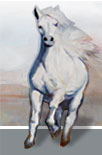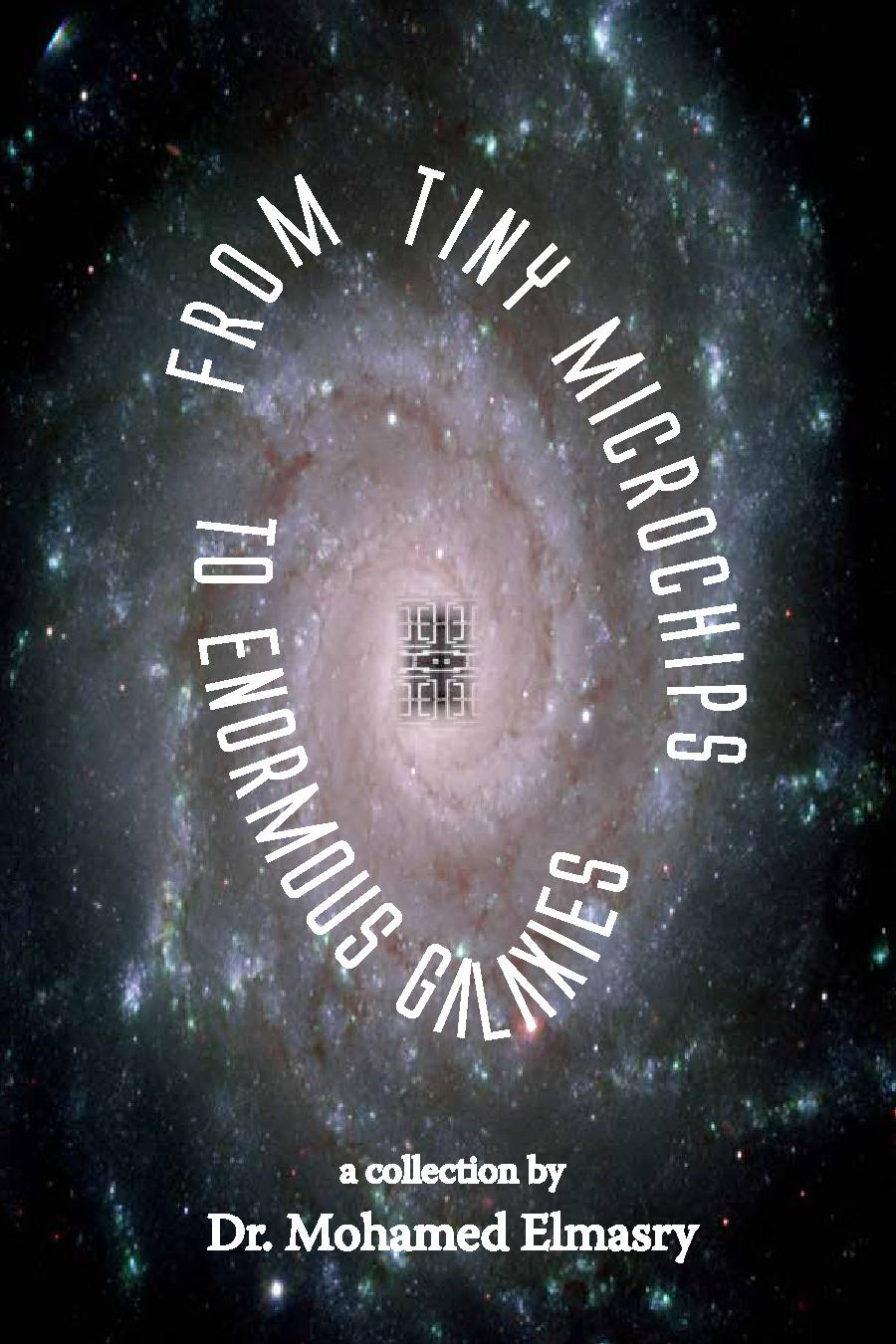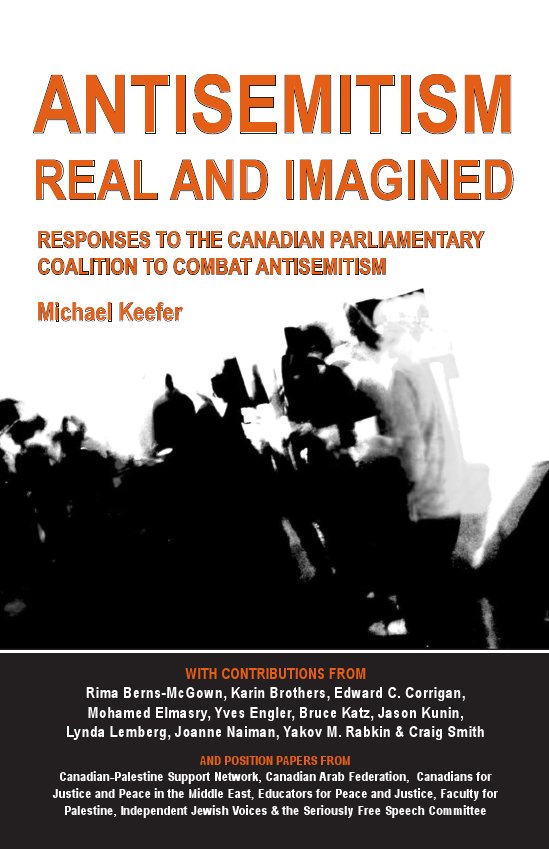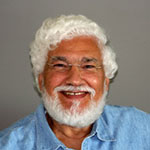September 22, 2021
September 30: National Day for Truth and Reconciliation
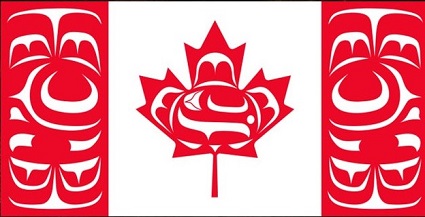
Native American and African Historical Connection, its Impact on Canada's Indigenous Identity
Abstract
This paper calls for the study of the historical connection that was established through trade, cross culture exchange, exploration, and intermarriage, between Native Americans and the Ancient African Egyptian Civilization, thus enriching Canada’s indigenous identity and accelerating Canada’s current reconciliation process.
1. Introduction
Writing a paper on the identity of Canada’s indigenous peoples in 2021 might be thought of as an overly ambitious undertaking; in fact, rather a gamble.
But it is the author’s way of coming to terms with himself, a 77-year-old Egyptian-born Canadian, privileged to be a world-renowned academic, scholar, and award-winning researcher in microchip design.
He arrived to Canada in 1968 to pursue a PhD, got married, had four children, and now blessed with six grandchildren.
His PhD students have become internationally esteemed professors in Japan, China, Indonesia, Malaysia, India, Egypt, the European Union, United States and Canada.
Clearly, he had checked all the typical boxes for “success,” so what is he coming to terms with? – To the fact that for the past 53 years he feels that he has been living, working, and raising his family on stolen land.
He became interested in the cause of Canada’s indigenous peoples in 1975, when as a young professor of Computer Engineering at the University of Waterloo, he first read Prison of Grass, Canada from a Native Point of View, by Dr. Howard Adams (1921-2001), Professor of Education at the University of Saskatchewan, and proud to claim and advocate for his Métis ancestry.
The book awakened his passion for the subject, which he followed through by reading other books from indigenous and non-indigenous authors; viewing many documentaries on the subject; and more recently, studying in 2015 Canada’s Final Report of the Truth and Reconciliation Commission (TRC).
A book that particularly impressed the author was A Global History of Indigenous Peoples, Struggle and Survival (2004) by Dr. Ken S. Coates, a colleague from the University of Waterloo.
When Prof. Coates felt his passion about the subject during a lunch discussion, he wrote in his copy of the book, “Mohamed, many thanks for your interest in creating a better world. Ken.”
At the time Ken Coates was Dean of Arts at Waterloo; he is now the Munk Senior Fellow in Aboriginal and Northern Canadian Issues at the Macdonald-Laurier Institute in Ottawa.
He has also worked as a consultant for indigenous organizations and governments in Canada, New Zealand, and Australia, as well as for the United Nations.
Parallel to this learning, the author was also aware of the 1976 book, They Came before Columbus by Dr. Ivan Van Sertima, and the recent 2013 book African Empires in Ancient America by Dr. Clyde Winters.
Another memorable experience for the author was the 1986 book and television series by Dr. Ali A. Mazrui, The Africans, A Triple Heritage and The Africans, A Reader which he edited with Dr. Toby Kleban Levine.
The author was intrigued by Dr. Mazrui’s thesis that Africans should be proud of their triple heritage, comprising native African civilization, Islam as both a religion and culture, and modern Western civilization.
While still active and busy in his career, both pre- and post-retirement, the author kept his studies of Canadian indigenous culture on the back burner – until mid-2021, when reports emerged in the Canadian media about hundreds of unmarked children’s graves discovered at Kamloops BC, and other Indian Residential School sites across Canada.
Against that sad and disturbing background, the author hopes this paper provokes discussion, initiates new approaches, and accelerates a long-overdue reconciliation between Canada’s indigenous and non-indigenous peoples; that rebuilding a truly multicultural society in which everyone is different yet equal; a country with a new social narrative – no blackness, no whiteness, no “indian-ness.”
Reconciliation must be based on a deeper understanding of the ancient civilizations that interacted throughout the Americas for millennia through trade, cultural exchange, exploration, and intermarriage – all long before Columbus and other Europeans arrived to “discover” and claim (with church and state blessing) a land they considered “empty” of civilization.
To approach this achievable dream it becomes necessary, urgent in fact, that Canadians engage in an authentic discussion about the identity of Canada’s indigenous peoples.
Harold Cardinal, a member of the Sucker Creek First Nation, rightly stressed in the 1999 edition of his 1969 book, The Unjust Society, how essential identity is to survival. He writes:
Thirty years ago, Indian Nations in Canada stood at an important crossroads, facing the prospect of termination. The Liberal government of the day proposed doing away with Indian reserves, status, and identity. It was, for Indian Nations, literally a question of survival.
German ethnologist Leo Frobenius (1873-1938) introduced the “continuity of culture and civilization” concept in his 1937 book African Genesis, which inspired the thesis of this paper:
The identity of Canada's indigenous peoples in 2021 must be based on a three-part heritage, comprising the native civilizations of the Americas, the ancient civilizations of Africa, and the later civilization of the largely Eurocentric western world.
While evidence for a rich and continuous pre-colonial interaction among indigenous peoples is abundant in the lore of aboriginal nations and tribes that thrived here for millennia, this has largely been suppressed for more than five centuries in official history books (most written by white male authors). That evidence has been relegated to museums, instead of classrooms.
Canada’s recent heritage – that of western white colonist-settlers, mainly from Britain and Europe – owes much to Canada's native indigenous peoples and the arrival of indigenous Africans. For the latter, their North American history began with trade, exploration, cross-cultural exchange, and intermarriage, but was profoundly distorted and debased by the politics and greed of slavery.
Elements of all three origins, plus the more recent addition of immigrants and refugees from around the world, give Canadian society a unique multicultural identity, one whose fusion of diverse heritages ideally positions us to build a better future for both indigenous and non-indigenous people.
Here, the definitions of renowned historian Dr. Arnold Toynbee (1889-1975) are especially pertinent. From his iconic Study of History:
Society: is the total network of relations between human beings. The components of society are thus not human beings but relations between them. A visible and palpable collection of people is not a society; it is a crowd. A crowd, unlike a society, can be assembled, dispersed, photographed, or massacred.
Culture: is . . . regularities in the behaviour, internal and external, of members of a society. Culture embodies values.
Civilization: is a particular kind of culture that has been in existence during a particular age. In spiritual terms civilization is an endeavour to create a state of society in which the whole of mankind will be able to live together in harmony, as members of a single all-inclusive family. This is the goal which all civilizations have been aiming at unconsciously, if not consciously. In the present state of knowledge the Age of Civilization appears to have begun approximately five thousand years ago. The main pillars of a given civilization are three, language, religion, and culture. To destroy a given civilization is to destroy its pillars and usually in that order.
2. Ancient African and Native American Civilizations
Here there is an attempt to answer three key questions.
What are the features of ancient African and Native North American civilizations? Did they interact before 1492? And if so, how?
First; To emphasize that the use of advanced technology in any age is not a necessary prerequisite to building a sustainable civilization.
Second; If the world at large is ignorant about the civilization of a given time and place, it does not mean that a given civilization doesn’t exist.
Third; It does not matter how isolated a society may be, as it will still develop its own unique civilization with the three pillars of language, religion, and culture; all humans are inherently programmed that way (see for example Dr. R. A. Stein's Tibetan Civilization, 1962).
Fourth; Civilizations interact through any combination (or all of) trade, exploration, armed conflict, cross-cultural exchange and intermarriage.
If in their interaction two civilizations avoid intermarriage – usually due to a collective bias that the “other” is primitive or inferior in some way, both peoples lose.
Intermarriage is important, as it can foster social acceptance of multiple cultures within a very few generations. No other means has proven as effective – not forced education, not subjugation, not compulsory conversion, not legislative assimilation. The practice of intermarriage also greatly reduces the likelihood of physical or cultural genocide of a less dominant society.
As Toynbee rightly observed;
A civilization that succeeds in dominating a weaker society is liable to dismiss its victims as innately inferior, reducing them to the level of flora and fauna and exploiting or exterminating them as its own interests dictate." He adds, “the drawing of an American Indian woman and child takes its place in a series of carefully recorded observations of exotic animals and plants that were made by the sixteenth-century English ‘discoverers’ of the New World.
The ancient Arab historian and sociologist Ibn Khaldun (1332-1406) wrote, “Social acceptance is found only in groups related by blood ties. People resent the oppression of their relatives. The impulse to ward off any harm that may befall on those relatives is natural and deep rooted in humans.” (From An Arab Philosophy of History, translated by Dr. Charles Issawi, Princeton University, 1987)
An example of intermarriage playing a positive and significant role in the growth of a civilization was the interaction between Islamic-Africans and Europeans in Andalusia, now southern Spain and Portugal. It resulted in a culture lasting for nearly eight centuries, from 711 to 1492.
Two examples where a cultural avoidance of intermarriage could be seen as detrimental to less-dominant societies was the interaction of Europeans with indigenous peoples of the Americas, as well as with African societies, beginning with the dawn of colonialism during the 13th century.
It is a telling and tragic fact that European Christians, driven by a distorted perception of the superiority of their race and religion, wiped out Muslims and Jews in Andalusia about the same time as they were “discovering” the Americas, where they relentlessly strove to exterminate their native populations as well.
While Spanish Muslims and Jews who survived the Inquisition found refuge mainly in Africa, indigenous people of the Americas had no place to go. And while Africa rid itself of most European colonial governments beginning in the 1950s, one can argue that the Americas have not.
The colonial policy of white Europeans in the Americas was designed to deny indigenous populations legal blood relationships with Europeans through intermarriage; expel them from their ancestral lands; confine them to reserves; discard their cultural names; and suppress their language, religion, and culture into oblivion.
In the meantime, European scholars were also advancing pseudo-scientific opinions that Egypt is not an African civilization, and that people must be assigned to a race.
Their biased research led to stereotypes depicted throughout literature and the arts, thus opening the way for cultural genocide.
One of the earliest American literary works about inter-racial interaction during the colonial period, The Sovereignty and Goodness of God: Being a Narrative of the Captivity and Restoration of Mrs. Mary Rowlandson (1682), chronicled the experience of a Massachusetts woman captured in 1675 during King Philip's War by people she described as “merciless heathens” and “barbarous creatures.”
But in his Eulogy on King Philip (1836), American indigenous author William Apess contended, “the whites have always been the aggressors, and the wars, cruelties, and bloodshed is a job of their own seeking, not the Indians,” a viewpoint clearly at odds with that of Mary Rowlandson.
The historical European notion that Christianity, Judaism, and Islam were superior to “primitive” indigenous African and American religions has been proven false despite some pockets of conservative white supremacy.
Moses was born in Africa, raised by Africans, and educated in Africa – at the Egyptian court no less.
The religion of Ancient Egypt has survived until the present today and contains all the tenets of the three Western religions, including equivalents to the Ten Commandments, the Golden Rule, and monotheism (attributed to King Akhenaten as early as 1351 BC in the worshiping of one God, Aten).
In their An African History, A Very Short Introduction (Oxford University Press), John Parker and Richard Rathbone write:
“The cradle of mankind, where humans first evolved and from where they fanned out to settle the earth, Africa also possesses a recoverable history stretching back five millennia to the earliest of the world's ancient civilizations, that of pharaonic Egypt.”
Their book, along with Dr. Ian Shaw’s Ancient Egypt and Dr. Theda Perdue and Michael D. Green’s North American Indians (both in the same OUP series as Parker and Rathbone, cited above) are highly recommended as concise, yet scholarly surveys, accompanied by extensive references for further reading.
Egypt’s pyramids – which number more than 100 in addition to the iconic three of Giza – along with its great temples and mummies, are well known the world over as enduring evidence of an African civilization that made notable advances in science, visual arts, literature, music, technology, industry, agriculture, religion, and governance.
Egypt occupies a unique strategic and geographic position in Africa, at the continent’s nexus with Europe via the Mediterranean, and Asia via the Sinai Peninsula and Red Sea.
Through trade, cross-cultural exchange, wars, and intermarriage, ancient African societies interacted from the north and south over land and water – especially the River Nile and the Red Sea. They also connected eastward to India, China, and the Indonesian archipelago across the Indian Ocean.
Mastering open ocean sailing in ancient times was expensive, dangerous, and unpredictable, making sailors and seagoing merchants the heroes and popstars of their era.
Skilled crews from the east African coast plied the southern shores of Arabia and navigated their way to India and as far as the Orient. Their round-trip voyages often took months or years. Not surprisingly, some chose to remain in far-off countries, get married and raise families there, thus founding new communities of blended cultural roots.
It is also highly likely that African sailors and traders did the same going west over the Atlantic Ocean, arriving in the Americas long before Columbus, just as the Vikings are known to have done further north, leaving traces of their presence on Canada’s northeastern coast.
Columbus himself benefited from the presence and experience of Arabic-speaking Africans among his sailing crew; and the home he built in the Dominican Republic was called Columbus Alcatraz, from the Arabic Alcasir – the palace of Columbus.
No other African country has been studied more than, and no other country has more enduring ancient monuments than Egypt. Egypt also claims the world’s oldest central government, dating back to Pharaoh Narmer (3273 BCE) who unified the country’s north and south.
In The Rise of Civilization in Egypt and Mesopotamia, celebrated Egyptologist Flinders Petrie (1853-1942) wrote:
The beginning of a continuous civilization in Egypt must be set as far as about 10,000 years ago, or 8,000 BC.” Petrie also concludes that even in prehistoric times “there was a considerable shipping trade along the coasts of Egypt . . . (Large vessels) certainly imply a corresponding importance of commerce and of foreign imports, having been used at sea rather than on the Nile."
And he adds that “the age of Pyramid builders may be regarded as the height of Egyptian civilization. The greatest accuracy (was) during the fourth dynasty (4,700 BC), when the Pyramid of Cheops, or Khufu, was constructed with an average error of less than 1 in 15,000 of length, and of even less in angle.
In his 1976 book They Came before Columbus, The African presence in Ancient America, anthropologist Dr. Ivan Sertima says;
The step-pyramids found in America may be traced back to ancient Egypt. The most noted Egyptian step-pyramids are the Pyramid of Djoser at Saqqara (2750 BC) and the Pyramid of Medum built for the Pharaoh Sneferu (2700 BC). There were no pyramids in America before the ‘contact period’ (800–680 BC). The very first American pyramid appears at La Venta, the site of the colossal Negroid heads and the stele on which is carved the Mediterranean-type figure with beard and turned-up shoes. Other notable step-pyramids in America are the Pyramid of the Sun at Teotihuacan near Mexico City. We should also mention the Cerro Colorado Pyramid in the Chicama Valley in northern Peru.”
On July 7, 1987, Dr. Sertima testified before a US Congressional Committee opposing the recognition of the 500th anniversary of Columbus’ discovery of the Americas. “You can’t really conceive of how insulting it is to Native Americans to be told they were discovered,” he said. As a result of his and others’ testimonies Columbus Day was replaced by Indigenous Day.
3. Conclusion
Beyond reconciliation, Canada’s indigenous peoples are entitled to claim what is truly theirs; a beautiful civilization which had lasted for thousands of years before the arrival of Columbus.
The pyramids of African Egypt and those of the Americas together symbolize one harmonious indigenous civilization. The ancestors of today’s indigenous peoples shared their multiple heritage through trade, cultural exchange, migration, exploration, and intermarriage.
Canadian history books must be revised and broadened to reflect these equal founding civilizations. That includes acknowledging the fact for more than 500 years, European colonial powers exploited and subjugated indigenous societies of both Africa and the Americas. It is past time to correct those wrongs.
In 1967 Dan George (1899-1981), a hereditary chief of the Coast Salish tribe and honorary chief of the Squamish tribe in British Columbia – also known in his later years as a powerful television actor – gave a speech in Vancouver on the occasion of Canada's 100th birthday.
Its text was included in Touch the Earth (1971) by Canadian author T. C. McLuhan, an anthology of writing by North American indigenous authors, with early 1900s images by American photographer Edward S. Curtis.
Chief George said:
When you celebrate your hundred years, oh Canada, I am sad for all the Indian people throughout the land. For I have known you when your forests were mine; when they gave me my meat and my clothing. I have known you in your streams and rivers where your fish flashed and danced in the sun, where the waters said come, come and eat of my abundance. I have known you in the freedom of your winds and my spirit, like the winds, once roamed your good lands.
But in the long hundred years since the white man came, I have seen my freedom disappear like the salmon going mysteriously out to sea. The white man's strange customs which I could not understand, pressed down upon me until I could no longer breathe. When I fought to protect my land and my home, I was called a savage. When I neither understood nor welcomed this way of life, I was called lazy. When I tried to rule my people, I was stripped of my authority.
...
Oh Canada, how can I celebrate with you this Centenary, this hundred years?
Shall I thank you for reserves that are left to me of my beautiful forests? For the canned fish of my rivers? For the loss of my pride and authority, even among my own people? For the lack of my will to fight back? No! I must forget what's past and gone.
Oh, God in Heaven! Give me back the courage of the olden Chiefs. Let me wrestle with my surroundings. Let me again, as in the days of old, dominate my environment. Let me humbly accept this new culture and through it rise up and go on. Oh, God! Like the Thunderbird of old I shall rise again out of the sea. I shall shatter the barriers of isolation. So shall the next hundred years be the greatest in the proud history of our tribes and nations.
To that I can only add; Amen, brother Dan, Amen!
4. Postscript
On July 6, 2021, Mary Simon, a Canadian indigenous woman, Inuk leader and former foreign ambassador, was appointed as our newest Governor General. It is hopeful that she will make a lasting difference on Canada’s national journey to reconciliation.
- Prof. Dr. Mohamed Elmasry is Prof of Computer Engineering at the University of Waterloo.
- https://ece.uwaterloo.ca/~elmasry/



